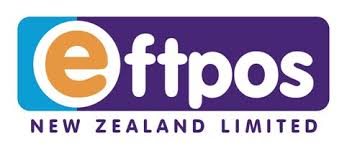Outdoor TV Enclosures
|
|
Welcome to the New Zealand TV & HiFi online store
Looking for a deal? We strive to look after our local client base and we will price match where ever possible.
Can't find what you are looking for? Our range is huge, call us and we will find it for you!
Want to have a listen? Come in for a relaxing in store demo, or please contact us:
Dan (Owner & Mobile Operations) 0508 AV SHOP or 021 977 595
Patrick (Showroom & Office Manager) (03) 928 1161 or 0225 977 595
Email: click here
Why do I have to spend extra to weatherproof my TV?
The most frequent objection we hear from would-be customers is that an outdoor TV enclosure costs more than the TV that it will be protecting. The refrain that we often hear is that even if an unprotected indoor TV wears down more quickly in an outdoor environment, a new TV is relatively cheap and it is more cost effective to simply buy a new TV when the old one breaks compared to protecting a TV with a presumed expensive TV enclosure.
The logic seems pretty sound at first. The problem with that argument is that an unprotected TV not only wears down more quickly in an outdoor environment but it will be unsafe, both for the TV and for you and your family. Moreover, given the long lifespan of a high-quality enclosure and the short lifespan of an unprotected indoor TV in an outdoor environment, protecting your TV with an enclosure will prove more cost effective in the long-run. So is it worth it to spend the money on an Enclosure?
Yes, protecting your TV and electronics for installation in the outdoor environment has a very specific value. Safety, convenience, a broader range of consumer choice, and a more cost-effective outdoor TV solution are what you get when you use an outdoor TV Enclosure.
Weatherproofing has a premium, and it should.
The dollar expense involved with repeatedly replacing the indoor unit, the time and hassle factor, the last-minute failure (Murphy’s Law, just before you need it) causing embarrassment, the disposal pollution of e-waste, and the fire and safety risks converge to enable a cost-effective risk-reward trade-off that make great common sense for the homeowner to make a smart choice.
Safety for you and your TV.
That sensitive electronics designed for indoor home use should not be used outdoors may seem intuitive to most, but there are numerous instances where people can compromise common sense, without the benefit of education, and the guidance of skilled expertise to “do the right thing”.
Guidelines issued by the U.S. Consumer Products Safety Commission for television safety are clear and unequivocal: “Never expose the set to rain or water. If the TV becomes damp or wet, pull the plug and have it inspected by a service technician before further use. Rain or excessive moisture – even as the result of exposure on a back porch – may cause electrical shorts which can result in fire or shock hazards.” In other words, don’t ever place an indoor TV outdoors. Period. As a result of these guidelines, and to protect against liability in the event of a problem, every manufacturer, without exception, provides detailed safety instructions within every owner’s manual. Their lawyers have done a thorough job of explaining the risks associated with placing their TV outdoors. Don’t listen to Apollo, listen to them. Sticking an indoor TV in your outdoor living space is not a good idea and can cost you and not just in terms of money.
Enclosures vs Purpose-Built Outdoor TV.
If you do not want to put an indoor TV outside and hope for the best, you have two main options, a purpose-built outdoor TV or an indoor TV that is protected with an outdoor TV Enclosure (sometimes known as an outdoor TV Cabinet). With Apollo Enclosures, you get to choose the make, model and features of the best name brand TV you want and safely protect it in our enclosures. Outdoor TVs have the LCD built in, typically are not smart or feature driven with apps and streaming and if there is a problem, the entire unit comes down and goes out for repair or replacement. How much does that cost and how long do you wait to get it back? The cost savings with an Apollo and TV of your choice can be anywhere from 15-50% less than outdoor TV depending on the TV you select. No issues with obsolescence as the TV’s can be replaced or repaired quickly by local store or ecommerce purchases while always having the integrity of the outdoor enclosure for use years down the road.
Engineered for ruggedness.
Apollo Enclosures are designed, engineered, and built – in the United States – especially for the unique conditions encountered in the outdoor environment and are certified to UL/CSA safety standards.
The special features built into the units include:
- Powder coated aluminum housing for durability and style
- Anti-reflective safety glass to reduce glare and enhance contrast
- Tight seal technology seals your TV against rain, dust and insect
- Thermostatically controlled airflow system protect the TV in temperatures up to 122 degrees
- Down facing sound ports transfer TV speaker audio effectively
- Watertight cable cover protects cable connections to TV inputs and outputs
- 9’ outdoor rated power cord for safe outdoor installation
- EZ mount internal TV swing brackets simply installation and easy cable management
Most of these features are not needed for a TV that you place in the safe, shaded, climate controlled setting that is your living room, family room, or bedroom. But when a TV sits in your backyard, patio or other outdoor areas, these features are essential if you want a safe, enjoyable outdoor TV installation and experience that will last you for years to come.
Outdoor TV is worth the investment.
It costs more to enjoy TV in your backyard than it will to enjoy it in your living room. What we, at Apollo Enclosures, want for you is to provide the best combination of quality, value, reliability, safety and versatility on the market.
Partial vs. Full Sun: How it Affects Your Outdoor TV Installation
When installing a TV outside, we recommend that your TV be installed in a location that is best suited for your viewing comfort. Once you make that selection, it will be important to evaluate how much shade and/or how much sun will fall on the front of the TV. Let’s compare partial sun and full sun.
Partial sun or indirect sun TV installations are defined as:
– Any areas of comfortable viewing; such as shade from trees, pergolas, umbrellas or overhangs.
– High ambient light void of any direct exposure of the sun on the TV screen.
– Areas of shorter periods of sunlight on the TV screen (1 hour or less) sheltered from long periods of direct sun hitting the TV screen.
Full Sun or Direct Sun installations are defined as:
– Placement where the TV screen can get more than 6 hours of direct sun from morning or afternoon exposure.
– Any installation where the direct sun hits the front of the TV.
– Installation where there is no overhead coverage of the TV.
Why does it matter?
For entertainment and enjoyment installations, TVs placed in partial sun have a crisper, brighter
picture image and are most comfortable to view over longer periods of time. Moreover,
there is no risk of isotropic behavior (black spots) when TV’s are out of the direct rays of the sun. There is no risk of damage to the TV from overheating.
In full or direct sun, Apollo’s DS “direct sun” line builds in more protection for the TV with IR film
to shield the TV from harmful UV and IR rays and additional airflow in the front cover to stream
air in between the glass and the TV further protects it from overheating.
Selecting the right TV to optimize brightness and picture quality
In either case, it is important to source a TV with the best HDR peak brightness to deliver a good picture image in the presence of high ambient light or direct sun on the TV screen. Digital
signage displays are the best technology for the brightest images, but these are mostly used in
commercial applications for easy reading of signage and information. For consumer backyards
or commercial restaurant patios, check the make, model specifications with budget you have in
mind and select a model that will best fit your needs in the installation location. A great source of
information for the brightest TVs on the market can be found here. You should be able to find HDR Peak brightness ratings for most models on the market today.
Conclusion
The right installation location, enclosure type, and TV model all contribute to your outdoor TV experience. Knowing the difference between partial and full sun, will help you achieve the ideal outdoor TV installation and the optimum protection of your TV.
0508AVSHOP





